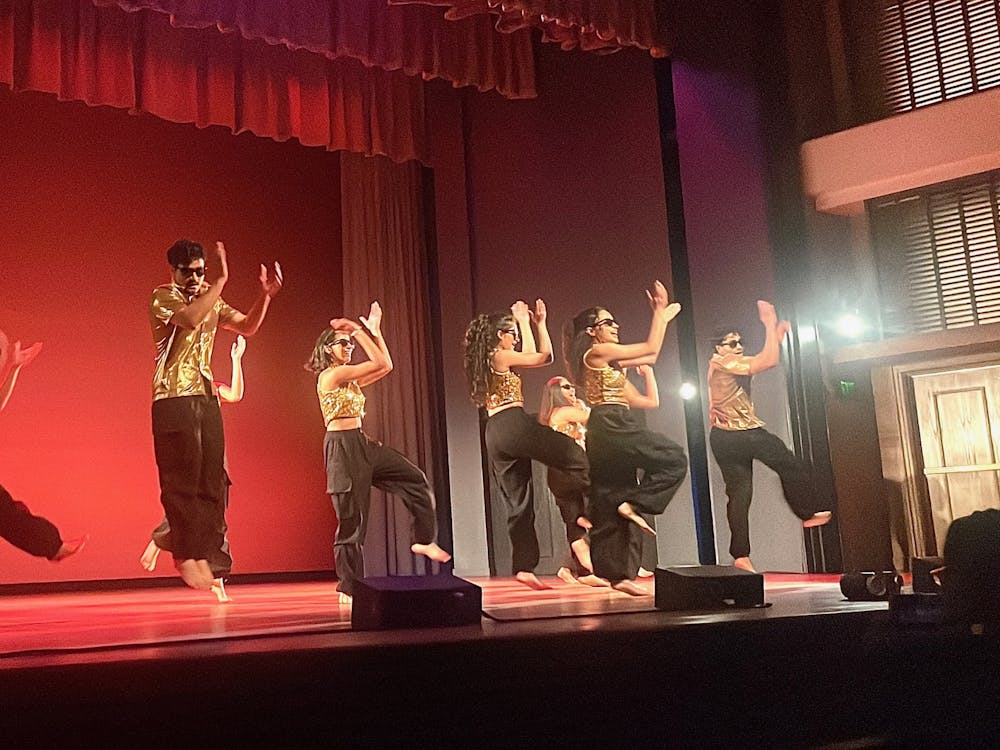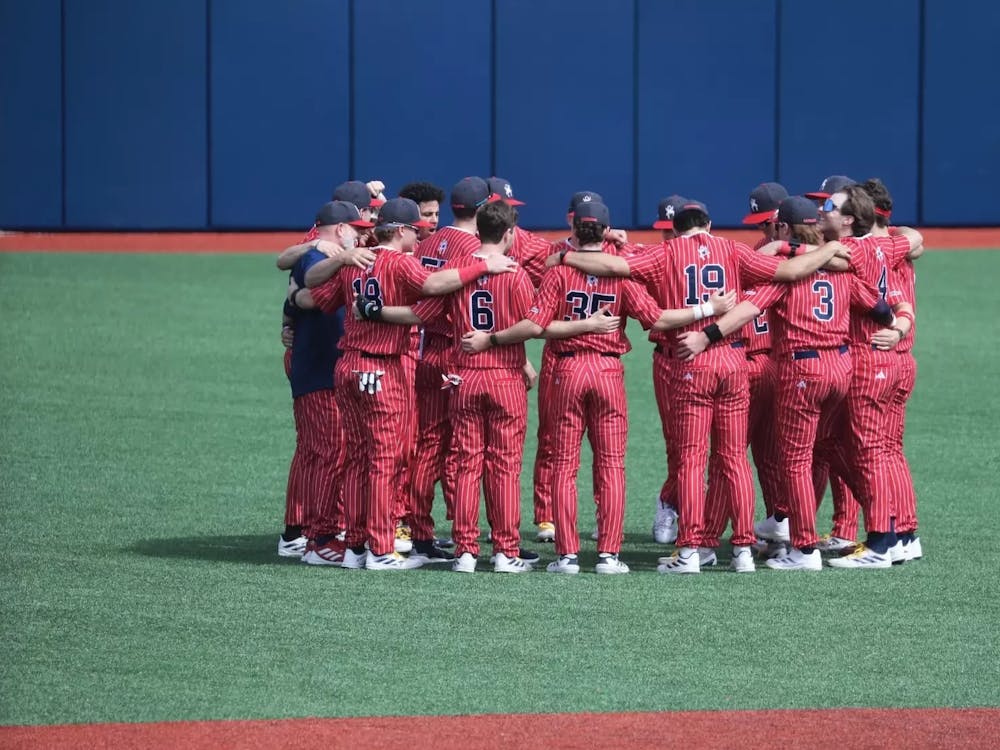On March 26, Pulitzer Prize-winning photojournalist David Carson showed a crowd of students, faculty, and Richmond locals an evocative image: a teary-eyed child clutching a small puppy in a lifeboat.
An accompanying caption, posted on X, called for people to sympathize with Hurricane Helene victims, racking up viral numbers and nationwide attention.
There’s a twist, though: the photo is AI-generated.
In his talk at the University of Richmond titled “Disinformation in the Age of AI,” Carson spoke about photojournalism, artificial intelligence, or AI’s, impacts on journalism and its presence on social media.
“You’re mixing the artificial with the synthetic with the real to make a false reality…it warps people’s perceptions,” Carson said.
The use of artificial intelligence in the creation of images and news coverage has become problematic. Carson described images like the one of the girl and the puppy as “a synthetic pile of pixels” that never occurred.
Carson began Wednesday’s discussion by talking about his career as a photojournalist and the value of being immersed in the communities he photographs.
Carson’s slideshow featured a series of images from his time in Ferguson, Mo., covering protests in the wake of Michael Brown’s death at the hands of local police. Many of the pictures were close-up and evocative, reflecting Carson’s willingness to dive into dangerous situations and document all aspects. Carson and his colleagues at the St. Louis Post-Dispatch won a Pulitzer Prize for their work in Ferguson.
“I always photograph reality – real photos of real things that happen in my community,” Carson said, reflecting on his 25-year career as a journalist.
Journalists and photojournalists are under increased pressure from AI, Carson said. In a stunning sequence of pictures, Carson prompted ChatGPT in four queries to generate a near-exact copy of one of the Ferguson team’s award-winning images.
The main issue is that there’s been no discussion of compensating creators, Carson said about the photographers whose work is used to train AI software. The New York Times is in the process of a copyright lawsuit against OpenAI, ChatGPT’s parent company, for training its model on the publication’s work.
While answering audience questions, Carson addressed the case.
“One thing I’m interested in is building public trust,” he said.
As Carson explained, the line between reality and fiction has long been blurred, citing his interest in the evolving status of truth. Carson used an image from the 1800s of Abraham Lincoln’s head pasted to John Calhoun’s body for an official portrait to illustrate that perception-altering strategies have existed for hundreds of years.
Enjoy what you're reading?
Signup for our newsletter
The invention of AI birthed more modern instances, like fake images of President Donald Trump’s “arrest” and a fake audio clip of Vice President JD Vance. Carson also presented the audience with AI-generated photos of former President Joe Biden, evidence of how “both sides” can use technology to deceive viewers.
Carson was recently minted as a John S. Knight (JSK) Fellow at Stanford University, where he is taking classes alongside undergraduates and receiving an education on how journalism is transforming in the digital age. On the topic of AI, he is impressed by these students’ discretionary skills.
“When I talk to a lot of the young students, they get it,” Carson said.
Even though Gen Z may be adept at determining the signs of AI interference, technology’s capabilities still threaten the public’s truth-seeking instinct, Carson said. Carson cites the reduction of fact-checkers at Meta as evidence of a trend in this direction, while rumors with singular sources are allowed to spread.
“I am a proponent of free speech,” Carson said, “but social media is not designed to inform us.”
Throughout the presentation, Carson wore a “CR” pin. It stands for “content credentials,” and represents a new icon added to photos by Adobe to help viewers discern if AI created the image, Carson said. Using a specific code, the system will interfere with or alter the symbol if the image has been edited – almost like a digital watermark. The symbol is promoted by the Coalition for Content Provenance and Authenticity (C2PA), which partners with major organizations like Adobe, BBC and Google.
For young reporters, today’s conditions are a perfect storm that reinforces the value of the human side of journalism, Carson said.
Carson made note of how AI has begun to permeate everyday news coverage. He mentioned an Italian newspaper that used an AI photo of Benjamin Netanyahu, Elon Musk, and Donald Trump in a story because they thought it was real.
Attendees, like retired teacher Sharen Eells, found the discussion illuminating.
Eells said it was “super interesting” to see how far AI has come.
UR sophomore Agáta Hodková also found Carson’s remarks on AI interesting in relation to her academics as a biology major.
“I think AI is good to use to simplify people’s work,” Hodková said, “If you need to get a vague understanding of something general, ChatGPT can give you pretty good information.”
Carson emphasized how AI-generated content can be dangerous because it challenges journalistic standards of transparency.
“A lie goes around the world before the truth puts its shoes on,” Carson said.
Moderator and UR American Studies professor Stephen Brauer echoed this notion and added to Carson’s concern about distrust in the media.
“We have a culture right now where trust is an issue, and trust in institutions is dimming,” Brauer said.
Carson ended the Q&A with the audience by addressing the idea of AI amplifying political polarization and its potential to spread misinformation.
“Journalism should be done by humans for humans,” Carson said. “You need to keep a human in the loop.”
Contact news writer Ella-Brooke Morgan at ellabrooke.morgan@richmond.edu and multimedia editor Christina Taylor at christina.taylor@richmond.edu
Support independent student media
You can make a tax-deductible donation by clicking the button below, which takes you to our secure PayPal account. The page is set up to receive contributions in whatever amount you designate. We look forward to using the money we raise to further our mission of providing honest and accurate information to students, faculty, staff, alumni and others in the general public.
Donate Now



